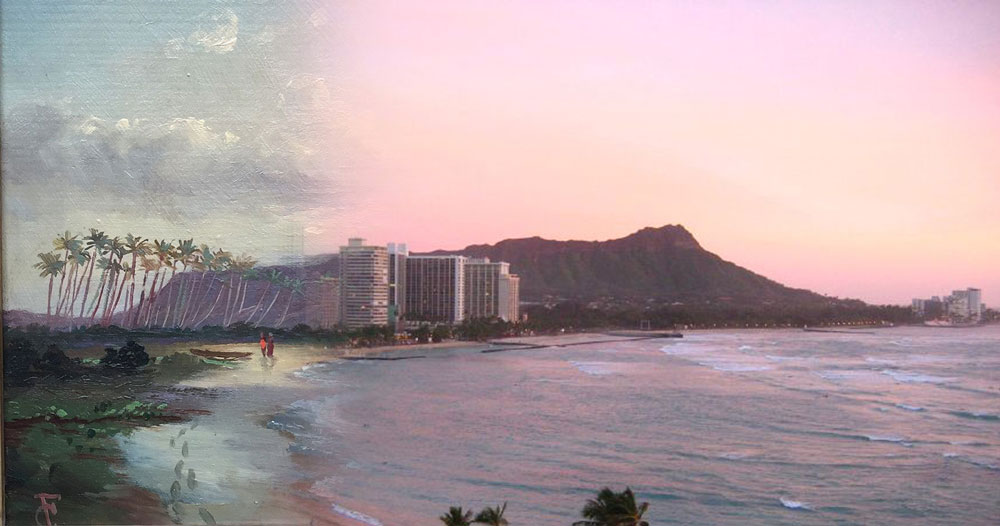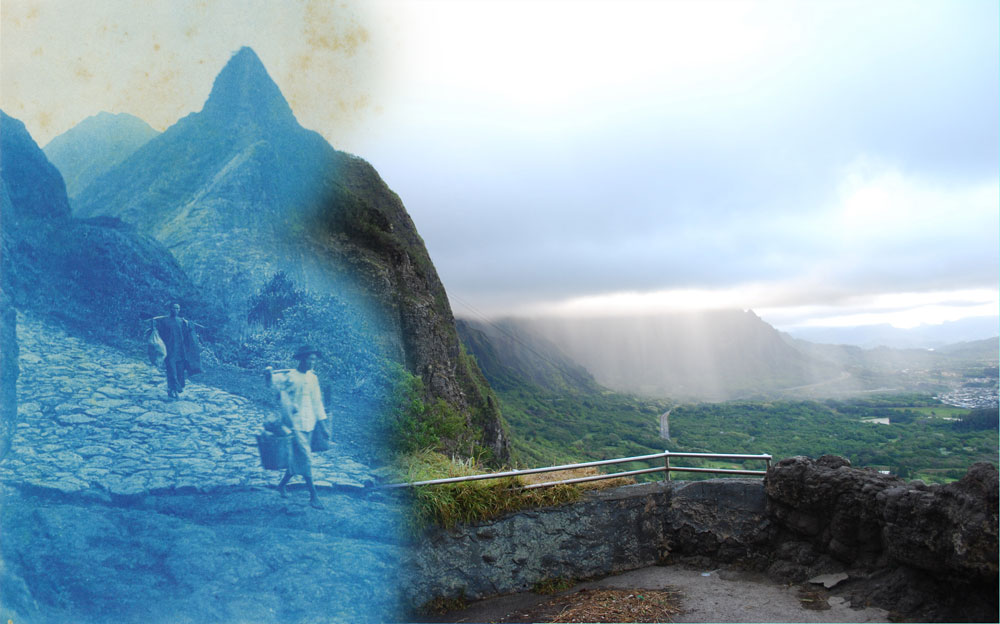
Now that the busy holiday season is over, and Punahou Carnival has come and gone, it is time to focus on spring and summer display plans. This spring and summer are going to be very exciting! Fellow artist and good friend Dawn Yoshimura created a thought-provoking exhibit concept for Association of Hawaii Artists (AHA), and also a second excellent concept for Hawaii Watercolor Society. Amazingly, both ideas were accepted by Honolulu Art Museum, and thus, HWS will be busy working on their exhibit, while a group of us from AHA are working on our exhibit, simultaneously bringing these two beautiful ideas to fruition. Having both proposals accepted is quite a honor and an accomplishment for Dawn. Now she is putting her energy into making the AHA exhibit a reality.
I am involved with the AHA exhibit, a prestigious curated show for AHA which will give local artists a chance to show their love of the beautiful islands we live on. Working with Dawn, and AHA’s new president, Kimberly Howsley, we drafted the initial prospectus and associated plans for the upcoming event and exhibit for AHA. The title is: Wahi Pana: A Sense of Place. “Wahi pana” is a special term in Hawaiian. It roughly translates to “the pulse of a place”. It’s quite an amazing imagery. Perhaps the most intimate marking of time we each experience is the pulse of our own hearts. To extend that intimate, universal sense of time to a specific special location is to extend the bounds of our bodies and our senses into the natural world surrounding us. To me, it shows the beautiful reverence for nature that is present in the names and sayings of the Hawaiian culture and language. The important things that happen over the course of time add to the mana or energy of the place. To know the story of a location is to develop a deeper understanding of the feeling you might get when you step into a certain part of the island.

The Wahi Pana: A Sense of Place exhibit will consist of a historical education session for all artists on a selected location (the are 1 – 3 locations per Hawaiian Island). Over the weekend of March 8 – 10, artists will be meeting in a limited selection of special historical areas to create art on site. This will foster community and more richly illustrate the way different artists experience the same places. The resulting art will be curated to assure quality with a desire to show the diversity of work created by artists living and working in the islands now. Dawn’s underlying question is whether knowing the history and lore of a specific location will enrich or change the appearance or focus of art done on site where artists can feel the energy of the area and remember the stories they have been told. She is an ardent plein air watercolor painter, and it is inevitable root that her concept grew from. This habit of painting regularly outdoors is widespread among a variety of media (oil painter, pastel artists, etc…) especially here in Hawaii where the weather allows for painting outside year-round. The art in the exhibit will not all be paintings and drawings. Other media can be adapted to be created at least partially on-site, so hopefully we will have a variety of lovely 2D and 3D pieces with a palpable sense of place. The show will center on the feeling that stems from first-hand observation and familiarity with the artist’s chosen location. I suspect for many artists the educational segment really will deepen the sense of these locations being unique, and special to history. In turn, perhaps the locations will be more meaningful to the artist as well.
As of this writing, on February 3, 2019, there is a website (wrangling the website will be one of my biggest contributions to the show). It is destined to grow with time into a more comprehensive and information-rich part of the exhibit. Right now, it is mostly geared toward artists, spelling out the concept and presenting the prospectus and calendar. We are trying to spread news of this opportunity throughout the islands. As time goes forth, the site will transform into an online catalog and documentation that augments the exhibit for visitors to the gallery. The address is: www.wahi-pana.com. I will certainly mention it again in the months to come, and expect to be posting a few updates on Instagram and Facebook as the events unfold. Hopefully one of my pieces will be part of the exhibit as well.